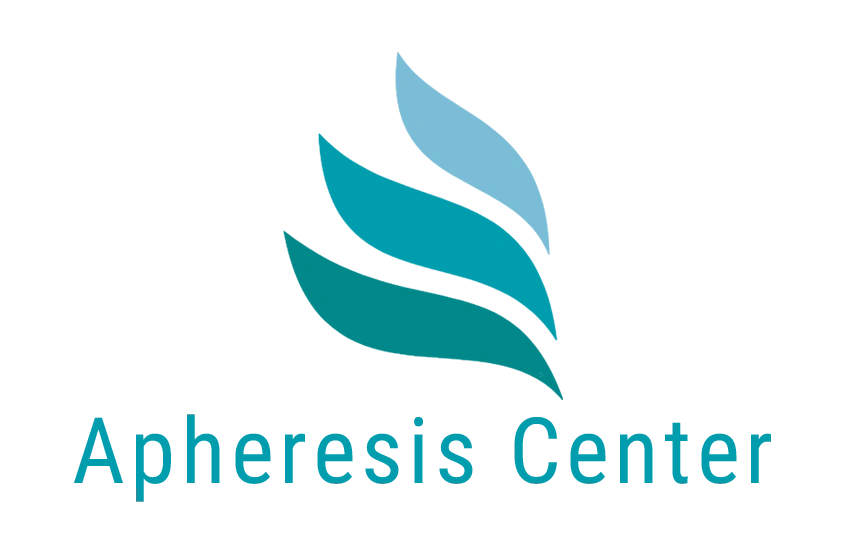A few years ago when I heard the term ‘apheresis’ for the first time I was bedridden 22 hours of the day and was looking for a therapy that would help me to overcome my severe Long Covid. I could not work and had a long list of debilitating symptoms – I was in pain 24 hours a day. It was right before the time when IV therapy, anticoagulation therapy and antiviral therapy made me ‘patient zero’ for Combination Therapy based on H.E.L.P. Apheresis and made me recover within a few months.
I remember my first thought was – well I just call the local hospital, book this apheresis thing I heard of and that’s it. How hard can it be?
It turned out to be hard. Very hard. (No worry – we now made it easy – Very easy. Read our patients guide here)
Ich wusste nicht, dass es im Bereich der therapeutischen Apherese Dutzende von verschiedenen Aphereseformen gibt.
‘Apheresis is a medical technology in which the blood of a person is passed through an apparatus that separates out one particular constituent and returns the remainder to the circulation. It is thus an extracorporeal therapy.’ Source: Wikipedia
So far so good, but back in early 2021 apheresis had not been used for Long Covid except for 17 people before me, which I found out pretty quickly. And I did not know that there is also machines that separate out not only one constituent as Wikipedia mentions, but hundreds of them and even better – highly selective without separating out substances that the human system needs (Well – you guessed it – I am talking about H.E.L.P. Apheresis – but more about this later).
This blog post is not only about my personal apheresis journey and how I became patient zero for Combination Therapy after being patient number eighteen for H.E.L.P. Apheresis for Long Covid (which you find a study about here), but mainly I wanted to write a simplified guide about which of our types of apheresis are suitable for which purpose (in chronic illness) – because this is the most hard part to understand for a chronic patient who has never heard about any of this. And believe me, it is a difficult and vast topic, so a bit of simplification can’t hurt.
Verschiedene Arten der (therapeutischen) Apherese
In der nachstehenden Abbildung sehen Sie ein Diagramm, das die Funktionsweise der vier wichtigsten Arten der therapeutischen Apherese zeigt.
For the first step (Primary System – the plasma separation – this is where white blood cells and red blood cells and blood platelets are separated from the rest of the blood, the yellowish liquid called blood plasma) there exist 2 systems to achieve this: filtration with a membrane or using a centrifuge.

Für die zweite Stufe (Sekundärsystem) gibt es hauptsächlich vier Typen:
– 1) Throwing away the plasma: Therapeutic Plasma Exchange
– 2) Modulating the plasma: Heparin Precipitation (=H.E.L.P. Apheresis)
– 3) Filtering the plasma: ‘Classic’ Plasmapheresis (various cascaded filters and subtypes exist)
– 4) Perfusing (=bathing in a fluid) the plasma: Immunoadsorption
Don’t get confused: H.E.L.P. Apheresis is a subtype of Plasmapheresis too – the name Plasmapheresis only states that the apheresis type used treats the plasma.
H.E.L.P. Apheresis is a very advanced type of plasmapheresis though – actually it is one of it’s kind – regarding how it technically works and what results it can achieve. Yes – this might be a bold statement, but the medical and research community active in this area has tested literally every apheresis machine and by now has mostly given up hope that we will find anything as effective as H.E.L.P. Apheresis (B.Braun Plasmat Futura is the H.E.L.P. Apheresis machine’s name) for Long Covid, Post-Vac Syndrome or other Chronic Illnesses.
Here are two interviews of leading experts regarding this: Technical Application Expert Silke Fischer and Dr. Gunnar Bücker
Welche Arten der Apherese bieten wir im Apheresezentrum an?
Despite H.E.L.P. Apheresis and Inuspheresis® from our clinical experience, being the by far most successful apheresis types (80% success rate – not only from our clinical experience, also published on the ISFA 2023 World Conference for Apheresis and in various studies and public sources) – there is room for other types of apheresis for specific indications, sometimes it makes also sense to combine them with H.E.L.P. Apheresis and Inuspheresis®:
1). H.E.L.P. Apheresis – the most successfully tested (together with Inuspheresis®) type of apheresis we use. A great first line treatment as it has five modes of action and therefore works for a very broad range of illnesses and symptoms:
a) Beseitigung von Gerinnungsstörungen, Hyperkoagulation und Microclots
b) Beseitigung von Entzündungsmodulatoren wie Zytokinen und Chemokinen
c) Beseitigung von Autoantikörpern und Cholesterin/Lipiden
d) Entfernung von Spike-Protein, viralen Fragmenten, Viren, Bakterien und Pilzen
e) Entfernung von Hunderten von Toxinen und Krankheitserregern
Classic Plasmapheresis types do not work in any way similar to H.E.L.P. Apheresis – the reason why H.E.L.P. works best for the above listed indications from all types of apheresis, seems to be the fact that the plasma for a short time is turned into ‘acid’ – it’s pH value is lowered to 5.2 by injecting acetate. In this acidic environment the pathogens and substances listed above will increase their negative load – whereas the injected heparin will not loose its positive load – hence it irreversibly binds to all those substances selectively and can then get stuck as solidified ‘precipitate’ in the precipitate filter which has the size of two football fields when unrolled (!). After this, several other processes follow, like a counter dialysis to bring up the pH value to normal again, adsorbing of the excess heparin and at the end applying an ultrafiltration and heating up the plasma to body temperature again, before reuniting it with the other blood components and giving the clean blood back to the patient.
Zusätzlich zur Entfernung aller oben genannten Stoffe erhöht die H.E.L.P. Apherese vorübergehend die Mikrozirkulation (Blutfluss in den kleinen Blutgefäßen) um 20 %, indem sie Faktoren der Gerinnungskaskade wie Fibrinogen entfernt und die Viskosität des Blutes vorübergehend verringert, indem sie es gleichzeitig um 10 % dünner macht.
2. Inuspheresis® – similar results as H.E.L.P. Apheresis (see scientific studies here) but more powerful when immune-related factors like autoantibodies need to be removed
Die Inuspherese® ist neben der H.E.L.P. -Apherese eine der fortschrittlichsten und am erfolgreichsten getesteten Blutfiltrationstherapien auf dem Markt. Es handelt sich dabei um eine leistungsstarke Behandlung, die schädliche Substanzen aus dem Blutkreislauf entfernt und somit hochwirksam für Long COVID, Autoimmunerkrankungen, Mikrozirkulationsprobleme und chronische Entzündungen ist. Ihr einzigartiger Wirkmechanismus zielt auf mehrere krankheitsverursachende Faktoren gleichzeitig ab und bietet so einen umfassenden und personalisierten Ansatz zur Heilung.
Inuspheresis® wirkt durch mehrere wesentliche Mechanismen und bietet ein breites Spektrum an Vorteilen:
- Beseitigung von Gerinnungsproblemen und Mikroklumpen - Entfernt wirksam Fibrin, Hyperkoagulationsfaktoren und Microclots und verbessert den Blutfluss.
- Reduktion von Entzündungsmediatoren - filtert selektiv Zytokine, Chemokine und andere entzündungsfördernde Substanzen heraus.
- Abbau von Autoantikörpern und Lipiden - Entfernt zirkulierende Autoantikörper und unerwünschte Lipide, die zu Immunstörungen und Gefäßerkrankungen beitragen.
- Entgiftung von Krankheitserregern und Toxinen - Extrahiert Spike-Proteine, virale Fragmente, bakterielle Endotoxine und Umweltgifte, die den Körper belasten.
3. Therapeutic Partial Plasma Exchange (TPPE) – a free and great enhancement of H.E.L.P. Apheresis
We have learned in the last years that classic plasma exchange is often too harsh for patients with severe chronic illness – it can destabilize them and worst case permanently affect them – but in an ICU setting it definitely has it’s use when a patients’ life is at risk.
Instead of the extremely invasive procedure of exchanging the whole plasma with either donor plasma or albumin (both can really cause issues for chronic patients which can only be controlled with medications like steroids et cetera) we have started to replace 10% of the plasma during a H.E.L.P. Apheresis treatment with 0,9% NaCl solution. If done slowly and precisely, side effects like oedemas in the face and swollen ankles do not occur, but the positive effect of getting rid of even more pathogens and toxins which are left in the plasma that is disposed, accumulates over a set of treatments, improving treatment results. However this is not advised for fatigue patients early on, as it can cause them to ‘crash’ or develop PEM-like symptoms after. Careful – do not mix up TPPE (Therapeutic Partial Plasma Exchange) with TPE (Therapeutic Plasma Exchange) which does not show results in Long Covid: https://www.nature.com/articles/s41467-025-57198-7.pdf
4. Immunoadsorption – a very specific treatment that is often applied too fast/intense for chronic patients
Immunoadsorption does one thing only, but at a very high efficiency: Removing autoantibodies. From our clinical experience it is only indicated if the patient has certain very high autoantibody levels. If applied too fast (the often standard 6 sessions in 2 weeks is what we believe (from anecdotes of patients who did immunoadsorption at higher speed as we apply) is too fast for many patients) there is a high risk of ‘crashing’ or getting worse, sometimes even permanently. Another issue is that most results are only permanent for approximately a third of the patients that undergo the treatment.
In general we have had better results with IVIG treatment so far than with Immunoadsorption – but both are a good combination with H.E.L.P. if applied correctly. More research is needed in this area. H.E.L.P. removes autoantibodies too (at a lower pace without creating issues) and outperforms Immunoadsorption in all other areas, another reason why it is the preferred first line treatment of our medical team.
5. Plasmapheresis – an often simple oldie but goldie?
Just a little reminder: The term ‘plasmapheresis’ only states that the apheresis type used, treats the plasma. There is dozens of subtypes of which most of use cascaded filters (two or more filters in line). From our clinical experience Plasmapheresis does work to a certain extent in chronic conditions, but for most of our treated conditions H.E.L.P. Apheresis is several times more effective.
Und eine zweite Erinnerung: H.E.L.P. Apherese ist eine Unterform der Plasmapherese, aber sie ist bei den Indikationen, für die wir sie einsetzen, nach unserer klinischen Erfahrung wirksamer.
All of the types of apheresis we offer at the Apheresis Center can be enhanced in their effect if combined with other therapies – this is why we developed ‘The Cyprus Protocol – Combination Therapy‘.
My personal recommendation: No matter which therapy form you choose, I always recommend to add a clinical nutritionist and a health coach as they measurably improve the overall treatment result! Here is a great video about this topic.
An important and free service we offer: If the above was too much because brainfog or cognitive dysfunction affect you, or if it was too little because you want to know more details before deciding about your next steps – we offer Free Consultations where we answer your questions!
Mit freundlichen Grüßen, Markus
PS: I work in the management and administration of our clinic. I am not a member of our medical team or a medical professional – the above blog post is an attempt to simplify the topic and make it more accessible for patients who are new to the topic – please bare with me if this has caused some small, but hopefully helpful (for the purpose) inaccuracies and generalisations.
PS2: I JUST SAW – TODAY IS THE 1ST ANNIVERSARY OF OUR BLOG. What a nice coincidence!

